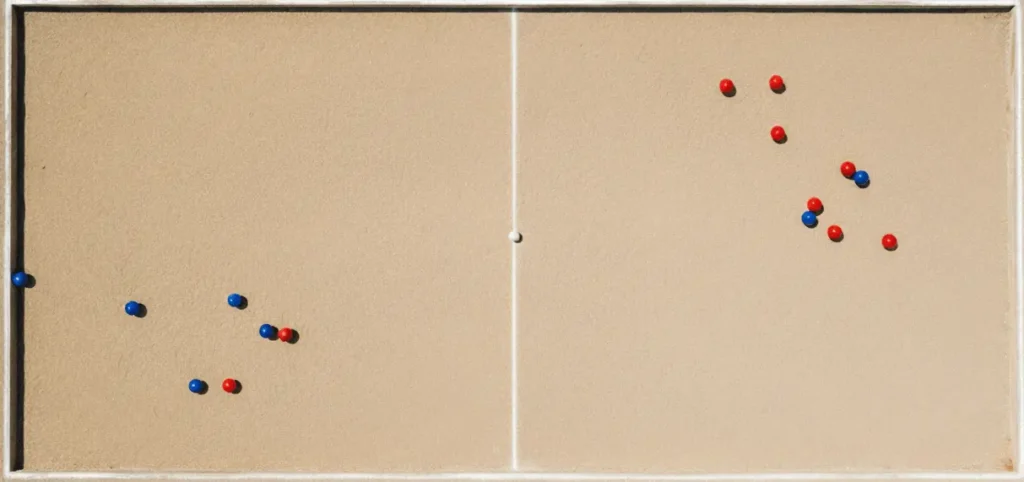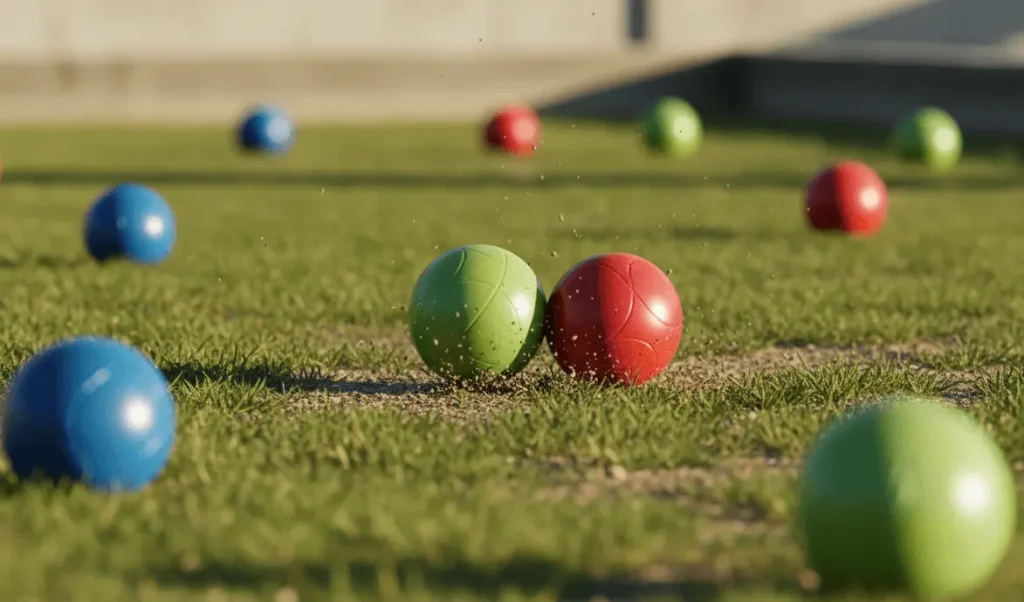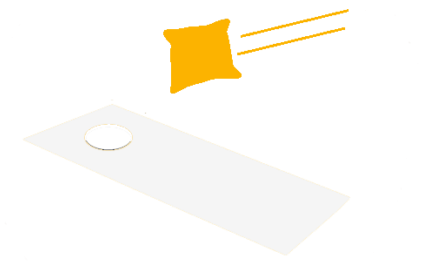How to Play Bocce Ball | Bocce Ball Game Rules
You roll heavy balls toward a small target ball. Get closer than your opponent. Score points. Win the game.
That’s bocce ball in one sentence.
This ancient Italian game has entertained people for thousands of years. Roman emperors played it. George Washington built a bocce court at Mount Vernon. Today, over 25 million Americans play bocce at beaches, parks, and backyard parties.
The rules are simple. The strategy runs deep. Anyone can learn in ten minutes.
Let me show you how.
What You Need for Bocce Ball
Bocce ball requires minimal equipment.
You need eight large bocce balls. These balls typically measure 4 inches in diameter and weigh about 2 pounds each. They come in four balls of one color and four balls of another color. Common color combinations include red and green, blue and yellow, or red and blue.
You need one small target ball called the pallino. Some people call it the jack or pallina. This ball measures about 2 inches in diameter. Most pallinos are white or yellow.
That’s the complete equipment list. Most bocce sets package everything together in a carrying case.
Setting Up Your Bocce Court
Bocce works on any flat, level surface.
Official bocce courts measure 13 feet wide by 91 feet long. Courts have wooden or plastic sideboards that keep balls in play. The surface is usually crushed stone, clay, or oyster shell. Most casual players never see an official court.
Backyard bocce adapts to your space. Mark out a rectangular area on grass, sand, dirt, or gravel. You can play on areas as small as 10 feet by 60 feet. Bigger is better, but work with what you have.
Beach bocce needs no preparation. Just find flat, packed sand. Mark boundaries with towels or draw lines in the sand.
No court at all? No problem. Open play bocce uses whatever space you have available. Just agree on rough boundaries before starting.
How Many Players Can Play Bocce Ball
Bocce accommodates two to eight players in several formats.
One versus one: Two players compete directly. Each player uses four bocce balls. This creates the most strategic game.
Two versus two: Four players form two teams. Each player throws two bocce balls. Teammates can be at the same end or at opposite ends.
Four versus four: Eight players form two teams. Each player throws one bocce ball. This format works great for large groups but moves slowly.
Teams need at least two players to avoid forfeit in organized play.
Basic Bocce Ball Rules

Understanding a few core rules gets you playing immediately.
Get your balls closer to the pallino than your opponent. That’s the entire objective. Distance determines everything.
The inside team stops throwing. Whichever team has the ball closest to the pallino is “inside.” They step aside. The “outside” team keeps throwing until they get inside or run out of balls.
Only one team scores per frame. After all eight balls are thrown, only the inside team earns points.
Throw underhand only. No overhand throws allowed. Underhand keeps the game safe and fair.
Hit anything you want. You can knock opponent balls away, move the pallino, or bounce off side walls. All legal moves.
Dead balls are removed. If your ball hits the back wall without touching the pallino or another ball first, it’s dead. Remove it immediately.
How to Start a Bocce Ball Game
Flip a coin to decide which team goes first. Winner chooses which end of the court to start from or lets the other team choose ball colors.
The team that won the coin toss throws the pallino first. The thrower tosses it underhand down the court.
Valid pallino throw requirements:
- Must pass the center line of the court
- Cannot touch the back wall
- Must land at least 12 inches from side walls
If the pallino throw is invalid, the thrower gets one retry. If the second throw also fails, the opposing team throws the pallino.
Once the pallino is in a valid position, the same player who threw it delivers the first bocce ball. This ball can go anywhere on the court as long as it’s thrown underhand.
After the first ball is thrown, play alternates based on which team is inside.
Understanding Inside and Outside Position
This concept drives all bocce strategy.
The team with a bocce ball closest to the pallino is “inside.” The other team is “outside.”
When you’re inside, you stop throwing. Your ball is winning. Why risk changing that?
When you’re outside, you keep throwing. You need to get a ball closer than the inside team’s closest ball. Once you succeed, you become inside and your opponent becomes outside.
This continues until both teams throw all their bocce balls.
Example:
Team Red throws first and lands near the pallino. Team Red is inside. Team Blue must throw until they get closer or use all four balls. If Team Blue gets closer with their second throw, they become inside. Team Red must now throw their remaining three balls trying to get back inside.
How to Throw Bocce Balls

All bocce balls must be thrown underhand from behind the foul line.
You can use different throwing techniques:
Rolling
The most common method. Roll the ball smoothly along the ground toward your target. This gives maximum control.
Pointing
A gentle toss with slight loft. The ball lands softly near the pallino without disturbing other balls.
Raffa
A forceful throw aimed at hitting target balls. You can roll it hard or loft it slightly to knock opponent balls away.
Lagging
Throwing your ball to land short, creating a defensive barrier between opponents and the pallino.
You can get creative with your throws as long as you stay behind the foul line and throw underhand. For safety, don’t loft balls higher than necessary.
Bocce Ball Scoring System
Only the inside team scores points after each frame.
Count how many of your team’s bocce balls are closer to the pallino than your opponent’s closest ball. Each ball scores one point.
Example 1: Team Red has the closest ball. Team Blue’s closest ball is third closest. Team Red has two balls closer than Team Blue’s best ball. Team Red scores 2 points.
Example 2: Team Red has the three closest balls to the pallino. Team Blue’s closest is fourth. Team Red scores 3 points.
Example 3: The closest ball from each team is exactly the same distance from the pallino. No points awarded. The team that threw the pallino keeps it and starts the next frame.
Maximum points per frame: Four points. This happens when all four of your team’s balls are closer than any opponent ball.
The Baci or Kiss Bonus
When a bocce ball touches the pallino at the end of a frame, it’s called a baci or kiss. Some rule sets award this ball 2 points instead of 1.
The baci rule is optional. Many casual games skip it. Tournament play may include it. Decide before starting.
Winning the Game
Games are played to a target score. Common targets include:
You must win by at least 2 points. If the score reaches 12 to 11, play continues. First team to get a 2 point lead wins.
Most bocce matches consist of multiple games. Best of three games is standard. Win two games and you win the match.
If you enjoy backyard games, check out my guide on how to play cornhole, tetherball, and ladder ball.
Playing a Frame of Bocce

Each frame follows the same pattern.
- The team that scored last throws the pallino to start the new frame
- The same player throws the first bocce ball
- The opposing team throws until they get inside or run out of balls
- Teams alternate based on inside/outside position
- All eight balls get thrown
- Measure to determine points
- Only inside team scores
- Start next frame from opposite end of court
Frames continue until one team reaches the winning score.
What Happens to the Pallino During Play
The pallino remains a valid target throughout the frame. You can hit it with your bocce balls.
If your ball moves the pallino closer to your other balls, great. If it moves away, that’s the game.
Pallino knocked out of bounds: The frame ends immediately. No points awarded. Start a new frame with the same team throwing the pallino.
Pallino knocked against back wall: It stays in play as long as it doesn’t go out of bounds. Even touching the wall is fine.
Pallino knocked before center line: The frame ends. Restart with the same team throwing.
Moving the pallino strategically is an advanced tactic. Beginners should focus on getting close to wherever it sits.
Dead Ball Rules
Certain throws create dead balls that must be removed from play.
Hitting back wall first: If your bocce ball hits the back wall without first touching the pallino or another bocce ball, it’s dead. Remove it immediately.
Out of bounds: Any ball that goes completely outside the court boundaries is dead.
Stepping over foul line: If you step over the line before releasing the ball, that ball is dead after one warning.
Dead balls don’t score. They’re removed until the frame ends.
If a dead ball moves other balls before being removed, reset those balls to their approximate original positions.
Bocce Ball Strategy and Tips
Good bocce players use specific tactics to win frames.
- Control the pallino. The team throwing the pallino chooses where to place it. Put it in a spot that favors your team’s strengths. Close if you’re accurate. Far if you throw with power.
- Block and guard. Place your balls between the pallino and your opponent. This creates obstacles they must navigate around.
- Knock opponent balls away. Don’t be gentle. A well aimed shot that removes their closest ball can swing 2 to 4 points in your favor.
- Save a ball. If you’re inside with balls remaining, consider holding one back. Your opponent might knock you out. Having a ball in reserve gives you a final chance.
- Aim for contact. Hitting the pallino often moves it closer to your other balls. This two for one benefit wins frames.
- Read the court surface. Grass plays slower than hard surfaces. Adjust your throwing power accordingly.
- Watch your opponents. Learn their tendencies. Do they throw short? Overshoot? Adjust your strategy.
Bocce Ball Measurements

Accurate measuring determines points.
Use a measuring tape or string. Measure from the center of the pallino to the edge of each bocce ball in question. The shorter measurement is closer.
Sometimes you can tell by eye which ball is closer. When it’s close, measure carefully.
Both teams should agree on measurements. If disagreement occurs, use the same measuring tool for both balls to ensure consistency.
In organized play, a referee makes all measurement decisions. Their call is final.
Press and rotate balls slightly before measuring. This marks their position in case they move during measurement. If a ball moves accidentally while measuring, return it to its marked spot.
Bocce Ball Court Dimensions
Understanding standard measurements helps if you’re building a court or playing organized bocce.
Backyard courts can be smaller. The key is having enough length for the pallino to travel past the center line and for balls to reach their targets.
Bocce Ball Etiquette
Bocce Ball for Different Skill Levels
Bocce adapts to all ages and abilities.
Kids: Shorten the court to 40 or 50 feet. Use lighter balls if available. Lower the winning score to 7 or 9 points. Skip complex rules like dead balls.
Beginners: Play open bocce without strict court boundaries. Focus on getting close to the pallino. Don’t worry about advanced tactics.
Intermediate players: Use a defined court with boundaries. Enforce dead ball rules. Practice different throwing techniques.
Advanced players: Play on regulation courts. Use all official rules including volo shooting (where permitted). Compete in tournaments.
Common Bocce Ball Mistakes
New players make predictable errors.
Throwing too hard. Control beats power. A gentle, accurate throw scores more than a wild fastball.
Ignoring the pallino position. Adjust your strategy based on where the pallino sits. Close pallino requires different tactics than far pallino.
Not playing defense. Sometimes knocking opponent balls away matters more than placing your own ball perfectly.
Poor foot position. Stay balanced. Stepping while throwing causes inaccuracy and potential fouls.
Watching the ball instead of the target. Keep your eyes on where you want the ball to go, not on the ball itself.
Rushing throws. Take your time. Line up properly. Breathe.
Bocce Ball Variations
Different regions play with different rules.
- Punto, Raffa, Volo: An Italian variation that defines three distinct throwing styles with different rules for each.
- Beach bocce: Played on sand with relaxed boundaries. Often allows overhand throws and more casual rules.
- Bocce championship rules: Strict regulations for tournament play including specific ball weights, court dimensions, and throwing techniques.
- Open bocce: No formal court. Play anywhere with rough boundaries. Most relaxed version.
Agree on which rule set you’re using before the first throw. This prevents mid game arguments.
Frequently Asked Questions (FAQs) about Bocce Ball Rules
Start Playing Bocce Ball Today
Bocce ball combines simple rules with deep strategy. You can teach someone in ten minutes. Mastering it takes years.
The game welcomes all skill levels. Kids play alongside adults. Beginners compete with experts. Everyone has fun.
Set up your court. Grab your balls. Throw the pallino. Start rolling.
Your first bocce game is waiting!

